Please email us or call us at 501049, 515036 if you need further assistance through the important process of finding the correct generator for your application.
Having a generator on hand can make life a whole lot easier in the event of a power outage caused by a natural disaster or system problem. For those who require electricity for medical reasons, it can be life-saving. While a portable generator will not power your entire house, it can provide enough electricity to make life bearable, and even comfortable, until power is restored.
Part 1 : Running a Generator
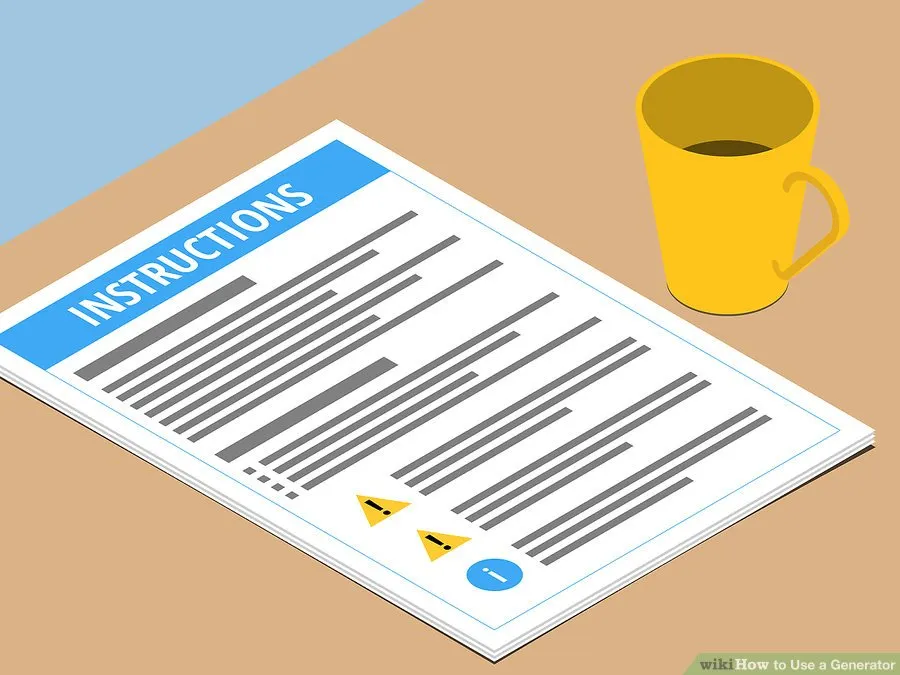
If you have never used your generator before, or if you haven’t used it in a long time, it is critical to read all instructions and safety information provided with the generator. Before attempting to start the generator, take a few minutes to read over the information provided by the manufacturer so that you understand how to safely operate the machine.
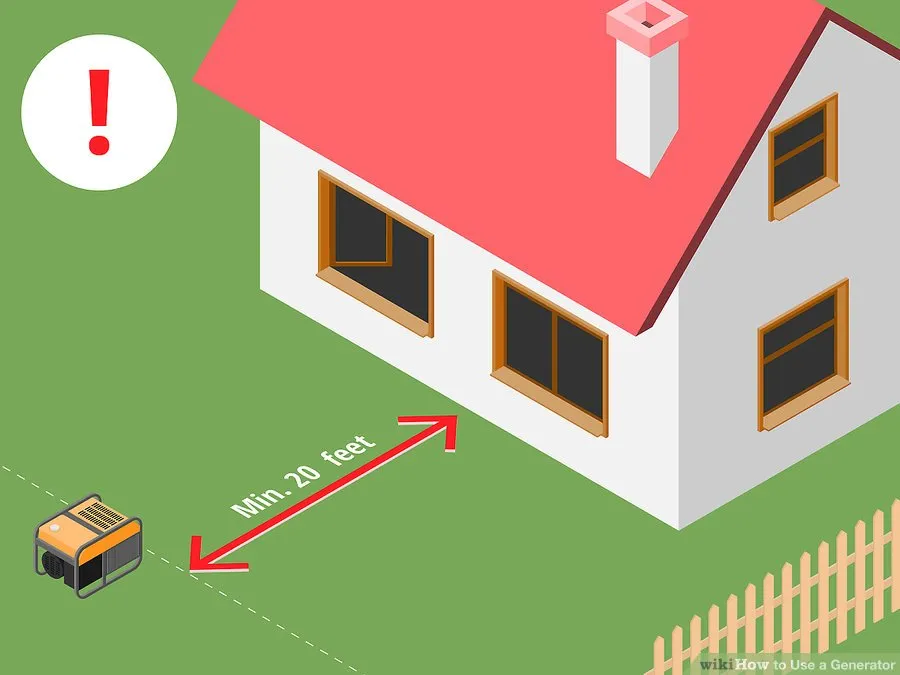
Generators can get hot and noisy, and produce dangerous fumes. Keep the generator outdoors, in a dry location, at least 3 feet away from anything else, and at least 20 feet away from any open doors and windows.

Your generator should have some sort of fuel gauge. Make sure that the generator’s fuel tank is adequately filled before starting the machine. Add more of the appropriate fuel, if necessary.

Generators need oil to lubricate their running parts. Following your generator’s manufacturer’s instructions, check the oil level of your generator before starting it up. Add more oil (using only the type specified by the manufacturer), if necessary.
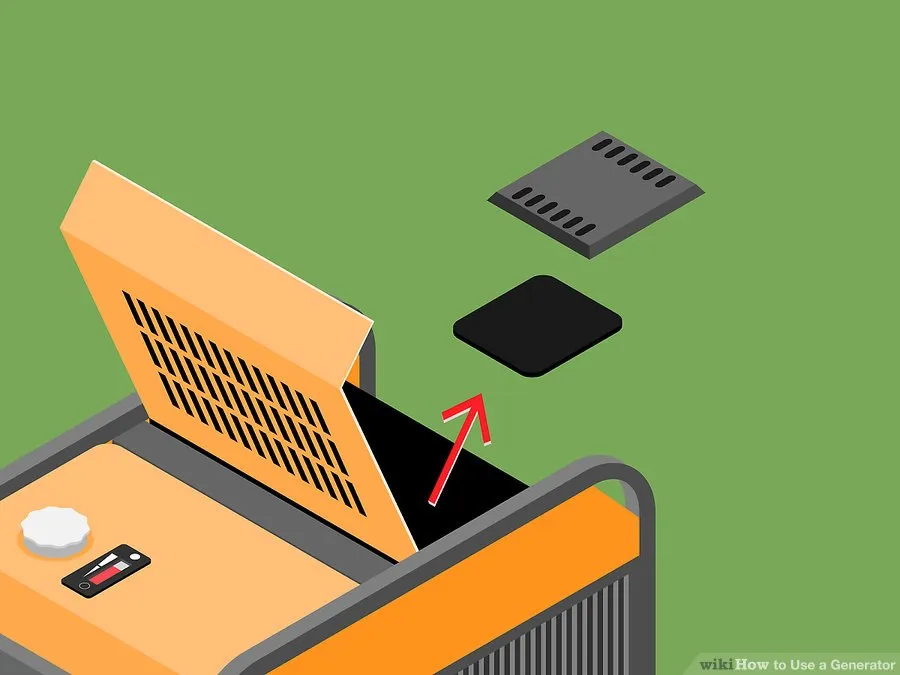
Your portable generator takes in air as part of the combustion process it runs to produce power. The filter traps dirt and debris, to ensure that the air the generator takes in is pure. You must inspect the filter before starting the generator. If it is dirty or clogged, clean or replace it according to the manufacturer’s instructions.

Your generator will have a switch that controls when it puts out power. Make sure that it is safely in the “OFF” position before starting the generator.
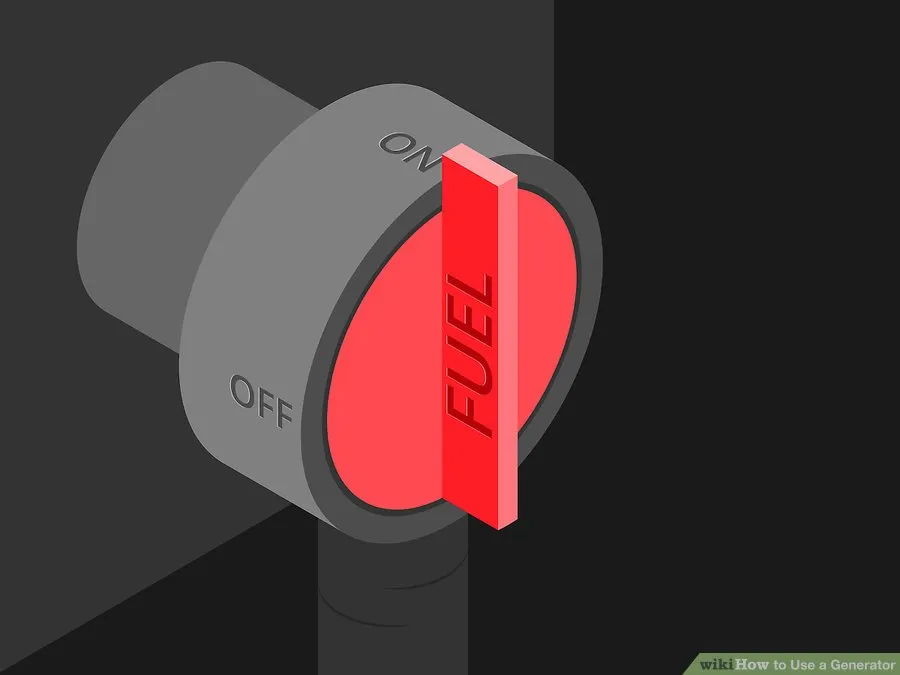
This control determines when fuel flows to the generator’s engine. The generator needs the fuel in order to run and produce power, but you should not flip the fuel valve on until you are ready to start the generator.
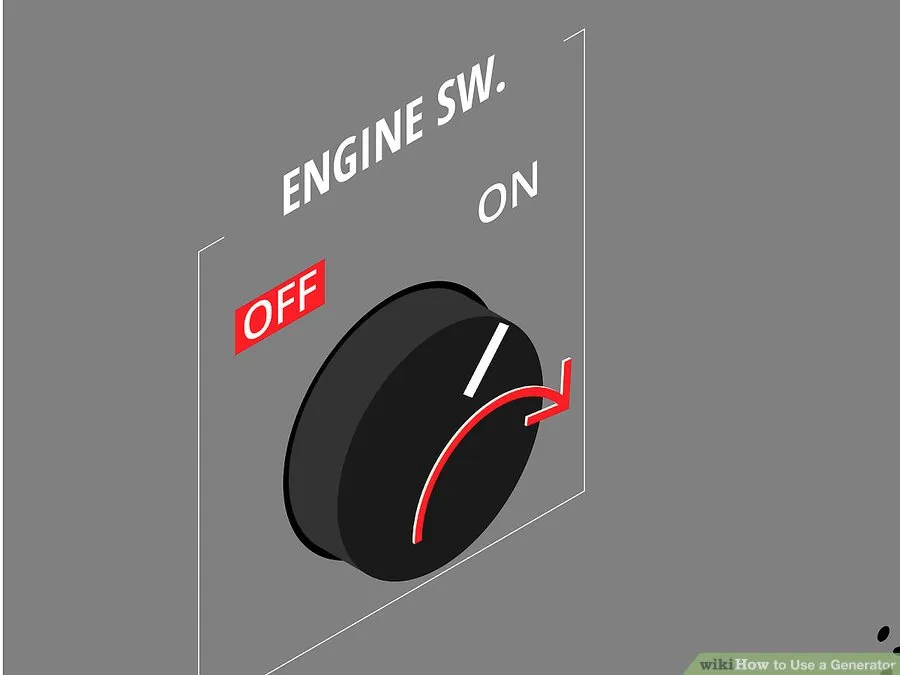
Using your generator’s “START” switch or key, power the machine up. You should let the generator warm up and run for several minutes before switching the circuit breaker to the “ON” position (check your generator’s instructions to see exactly how long it should warm up).
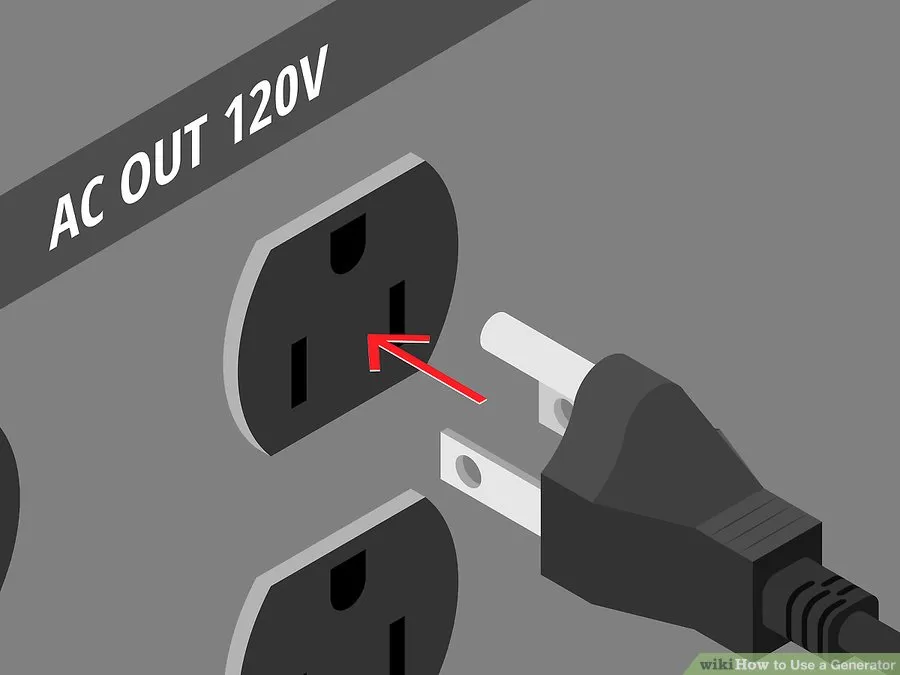
Many generators allow you to plug electronic devices directly into the generator. You may also use an approved extension cord. Choose one that is heavy-duty, outdoor-rated, and has a grounding pin.

When you no longer need the generator’s power, or when you need to refuel the generator, you should turn the machine off. First, flip the circuit breaker to the “OFF” position. Then, turn off the machine using the generator’s power switch or key. Finally, set the generator’s fuel valve to the “OFF” position.

The amount of fuel you can store may be limited by laws, regulations, safety considerations, and storage space. Try to keep enough around to power the generator for as long as you need it.
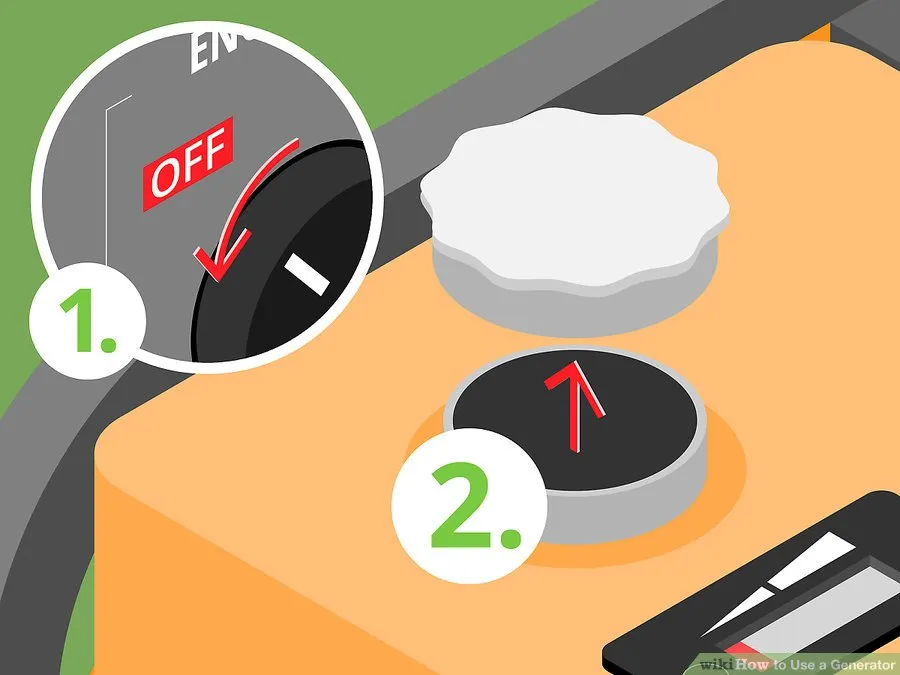
While it can be inconvenient to turn off your source of power when you most need it, trying to refuel a hot generator can be dangerous. Turn the machine off and wait 15 minutes to refuel. You can minimize the inconvenience by scheduling a refuel of the generator at an off-peak time, such as when your family is asleep.
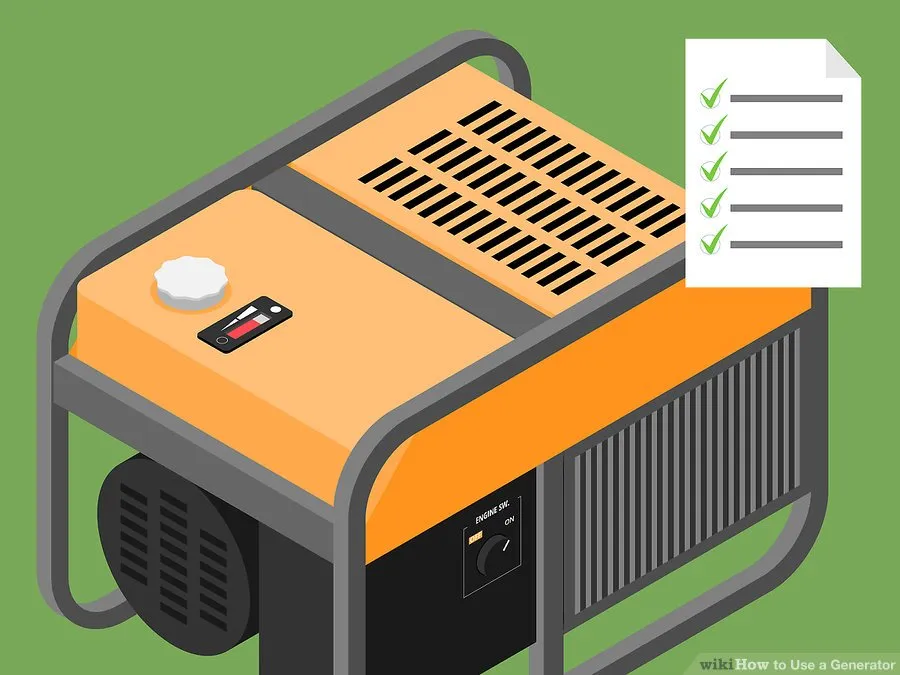
It is important to keep your generator in good working order. Since it may sit unused for long periods of time, you should schedule regular inspections (at least once per year). Make sure that all the parts are clean and that there is fresh fuel in the tank.
Part 2 : Following Safety Recommendations
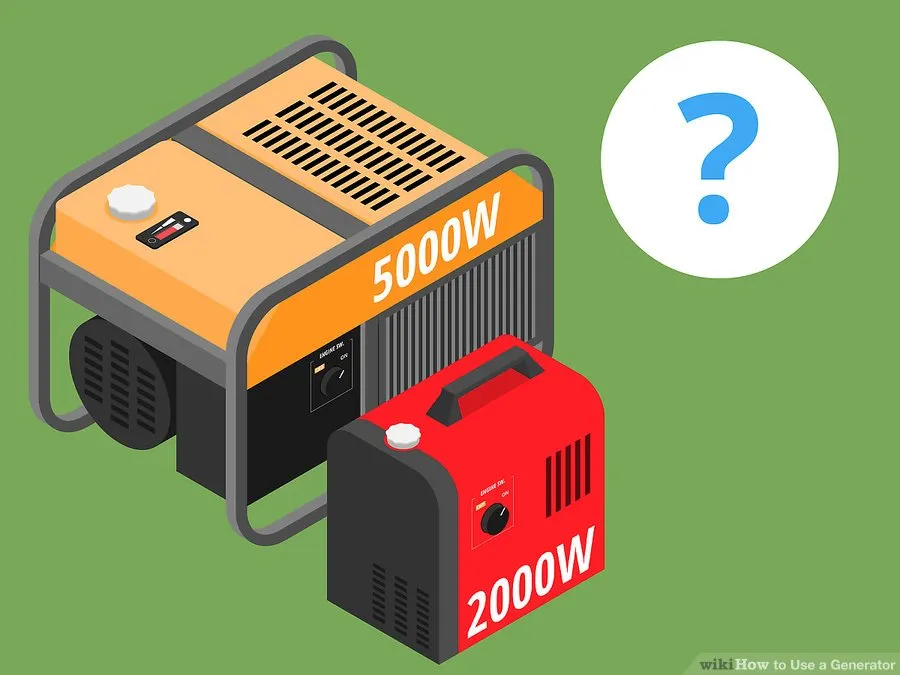
If you are shopping for a generator, get one that will supply the amount of power you will need. Labels and other information provided by the manufacturer should help you determine this.[19] You can also ask an electrician for assistance. If you connect devices that use more power than the generator can produce, you run the risk of damaging either the generator or the devices.
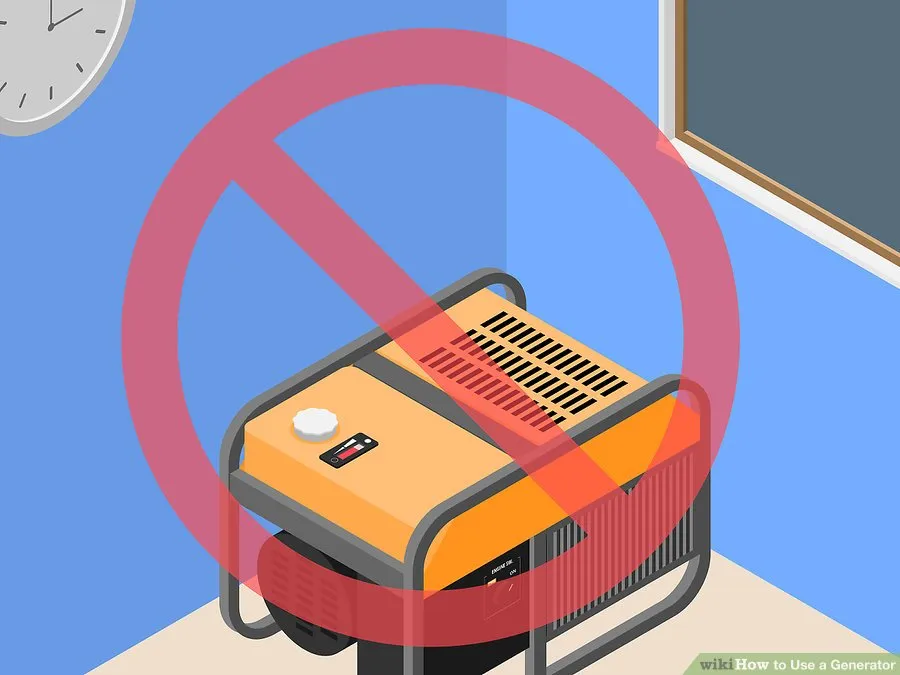
Portable generators can produce deadly fumes and carbon monoxide. When these become trapped in enclosed or partially-ventilated spaces, they can build up and cause illness and even death. Enclosed spaces can include not only rooms inside your house, but also a garage, basement, crawl space, etc. Carbon monoxide is odorless and colorless, so even if you don’t see or smell any fumes, you may be in danger if you use the portable generator indoors.
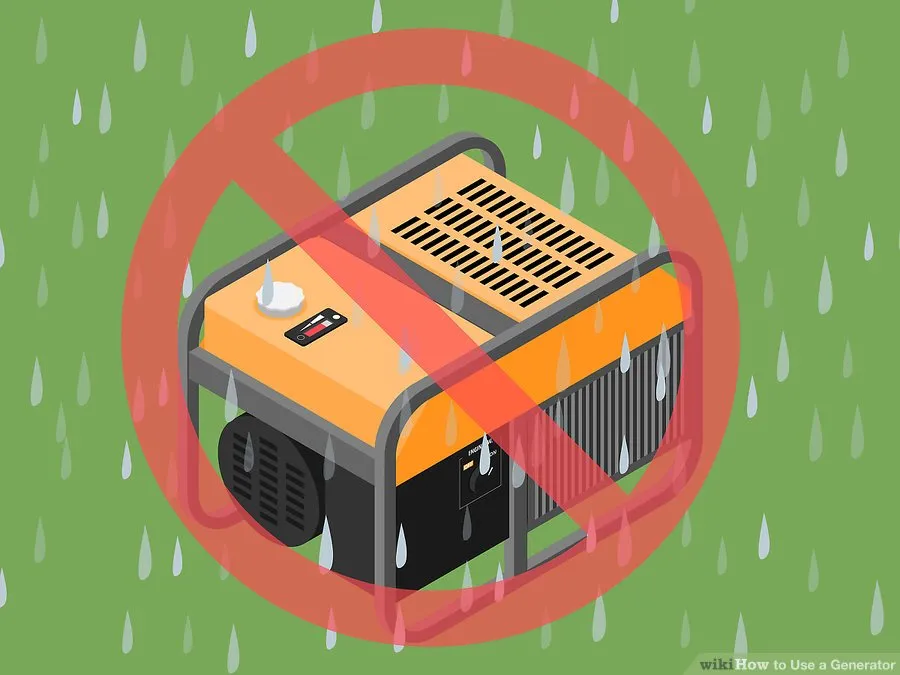
Generators produce electricity, and electricity and water make a potentially deadly combination. Set your generator on a dry, level surface. Keeping it under a canopy or other covered area can protect it from moisture, but the area must be open on all sides and well-ventilated.
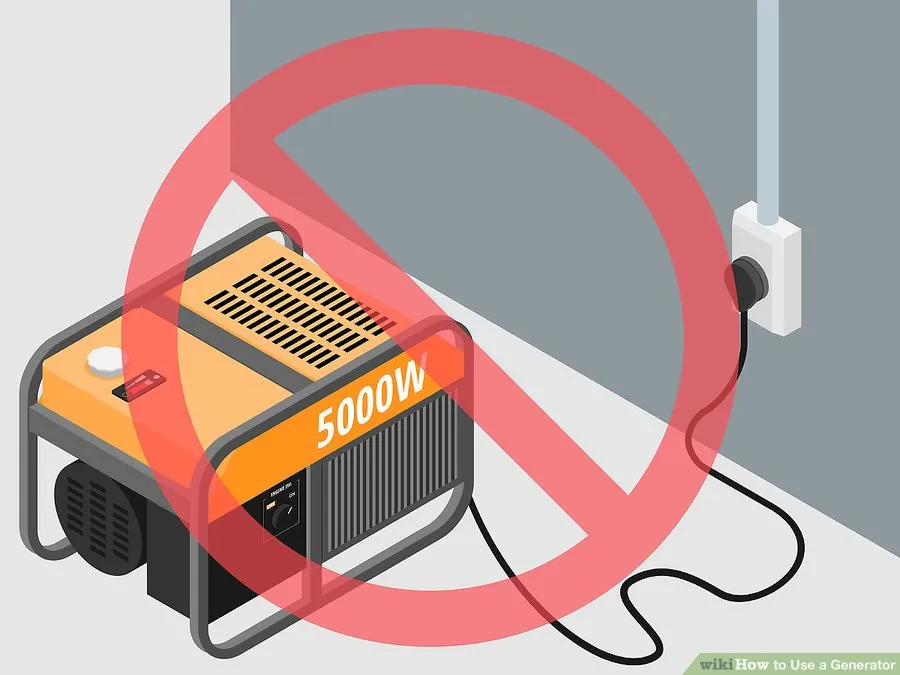
This is an extremely dangerous process known as “backfeeding,” since it runs power back into the grid. It can harm you, electrical workers trying to repair a system during an outage, and your home.
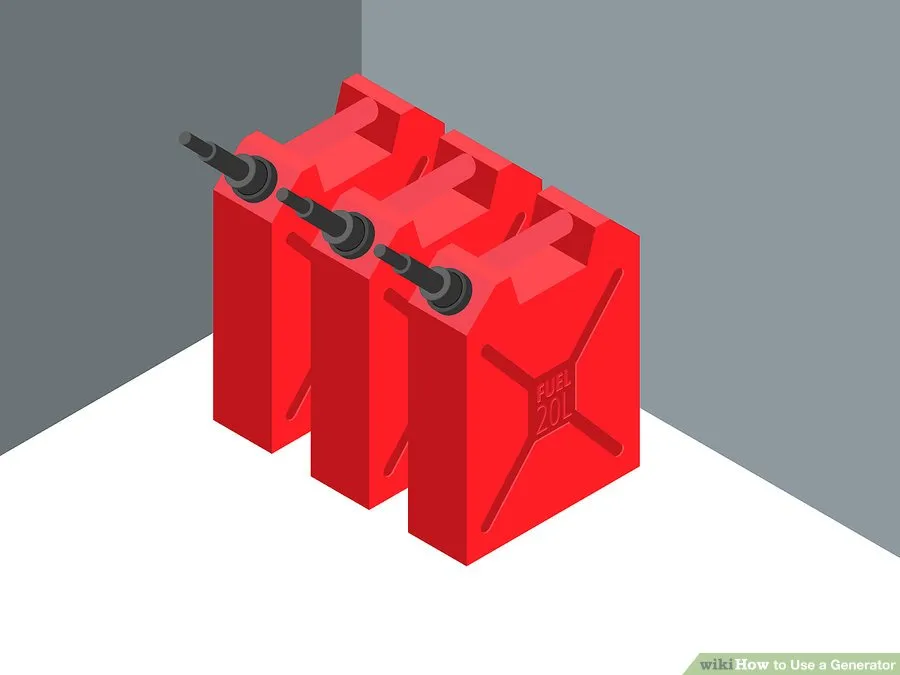
Use only approved fuel containers, and store the fuel according to the manufacturer’s instructions. Usually, this means in a cool, dry place, away from your home, flammable material, and other fuel sources.
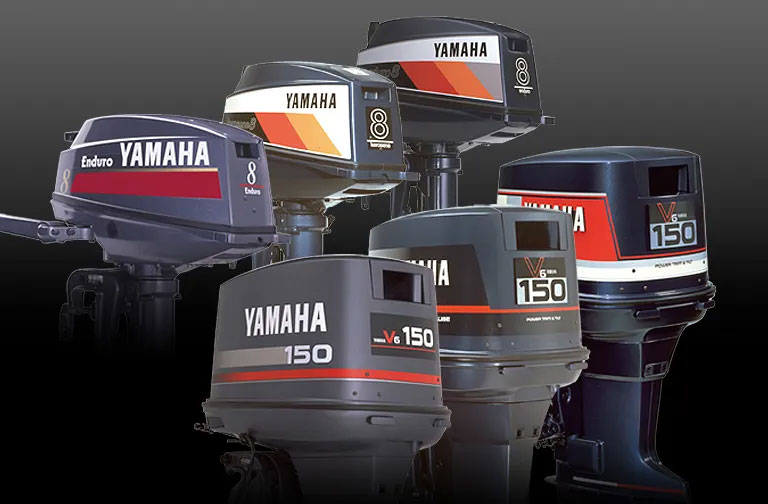
Since Yamaha Motor began manufacturing and marketing outboard motors in 1960, they have found markets all over the world where people use and love them as trusted partners on the water, for work and leisure use. Among the growing lineup of Yamaha outboards, the 2-stroke models with their simpler engine structure continue to have a strong customer following. In order to meet the diverse and demanding needs of these devoted customers, Yamaha offers a selection of over 50 2-stroke model variations and over 20 Enduro models.
How did Yamaha Motor become the leading outboard brand on the global market? Two events were especially important in the spread of the brand’s popularity. One was the decision to develop a line of Enduro models beginning in 1972. In many countries of the world where outboard demand is primarily for commercial uses, the water quality, weather and climate variance and long hours of continuous use make for a very harsh use environment. Yamaha’s Enduro models were designed and engineered with the durability and quality to withstand these extremely demanding use conditions. It was a product development process based on detailed surveys of use conditions and environmental factors made possible by the cooperative efforts of sales and service staff working together with local dealerships throughout the world. The survey data they gathered was then translated into ambitious development goals and evaluation standards that were tougher than ever before. The first Enduro model to emerge from this development project was named the “E8,” and it was soon followed by the E15, E25, E40 and E48. The launch of these models set a new standard for durability and eventually won a following of devoted users worldwide. In the nearly 30 years since the launch of the first Enduro models, they have been improved constantly and continue to be manufactured today as highly matured and proven models.
The second major factor in the growth of Yamaha outboards into a renowned global brand was the move into the US market in 1980s. Compared to commercial-use outboards like the Enduro series, leisure-use outboards had developed along a different set of demands, among which lightness Yamaha 2-strokes, the reliable power of choice for users worldwide and compactness were important qualities. Fully aware of these fundamental differences, Yamaha Motor became the world’s first outboard manufacturer to develop separate lines for commercial and leisure use. The development of Yamaha’s leisure-specific outboards began in 1981, and within three short years the project produced a lineup of 12 2-stroke models ranging from 40 to 220 hp and exemplified by popular models like the 150A. With this lineup, Yamaha Motor went to the 1983 Chicago Boat Show and launched its entry into the important US market.
Success in the USA wins Yamaha’s large horsepower outboards a place in the global market
Exclusive Yamaha technologies including highly durable paint finishes and anti-corrosion measures, along with the rugged durability honed in the world’s most demanding commercial-use markets, helped win the Yamaha brand a reputation for durability and reliability in the leisure-use sectors of the US and other mature marine markets. This set Yamaha Motor on course to become the acknowledge world leading brand it is today. Yamaha Motor continues to value the use-specific, market-oriented approach that made it a global brand. While for the leisure-use markets Yamaha has led the way in developing a growing lineup of high-quality 4-stroke models, at the same time we continue to offer a proud lineup of 2-stroke models ranging from 2 to 250 hp for commercial-use oriented markets around the world. What’s more, these models come in a very large number of variations tailored to specific regional and local requirements regarding factors like the actually use conditions and the types of boats they are mounted on. It is this Yamaha dedication to specific customer needs that makes us the brand of choice used and loved by people all over the world today.
The latest 2-stroke lineup unveiled with new graphics
Yamaha Motor has been manufacturing and marketing 2-stroke outboard motors for more than 50 years since the launch of the first Yamaha outboard in 1960. Outboard motors are used worldwide in a variety of environments and for a wide range of uses. The highest concentration in demand for 2-stroke outboards is in markets where commercial use exceeds leisure use. Because Yamaha wants to answer the needs of as many users as possible with reliable outboard motors capable of meeting the demands of the harshest use conditions and environments, we continue to provide a full lineup of 2-stroke models in Enduro and kerosene-fuel specs alongside our 4-stroke lineup. Now, this proven 2-stroke lineup has a new look. With the exception of a few models, the 2-stroke lineup features new graphics with prominent use of the Yamaha tuning fork logo as a symbol of the Yamaha brand’s reputation for unmatched product reliability and durability.
The lineups of outboard models offered differ by country or area. Product names, coloring and graphics may also differ. The specifications of outboards shown on this website may be changed or production discontinued without notice.
Always read your owner’s manual before using the outboard and be sure to use it properly.
Direct inquiries concerning Yamaha outboards to your country’s distributor or local dealership..
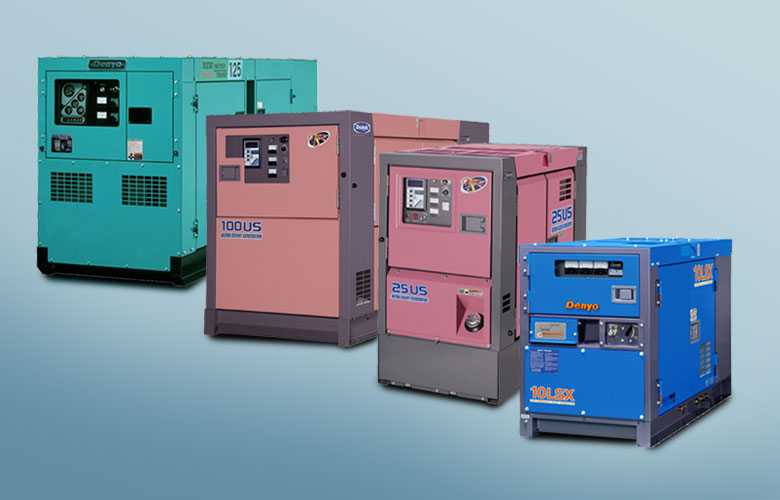
Please email us or call us at 501049, 515036 if you need further assistance through the important process of finding the correct generator for your application.
The most common question we receive is “How do I choose a generator?” There are a wide variety of generators available, but the primary differences are in watt size, engine size, and price. Basically, generators are made for three uses: recreational, emergency, and professional.
By taking the time to evaluate how many watts you need, you’ll be able to find the right generator to fit your needs. You can refer to our wattage chart for a general overview of basic watt usage. The amount of power your portable generator can produce is generally expressed in watts.
Although there are many areas where you can save money on generators, such as opting out of special features, the one area where you should never compromise is the power output of the generator. Less wattage certainly means less cost, but if your generator can’t run all of your basic appliances, it’s not going to be able to do the job you’re buying it for.
To determine the generator wattage you will need, add up the wattage requirements of the appliances and tools you need to run, and then add a safety margin so your generator never runs steadily at more than 50 percent of capacity.
Emergency Generators
Emergency generators can span a large variety of generator types, grades, styles, and categories. Many variations of portable generators and standby generators serve our clients in an “emergency” capacity. Depending on your wattage needs, you can select a generator in the 4,000 – 62,000 watt range to suit your preference for emergency preparedness. Emergency generators typically feature more powerful engines and larger fuel capacity than smaller recreational generators to help create power for important home appliances like refrigerators, lights, air conditioners, and home appliances. Because of their larger size, they can run for hours without interruption. They are designed to be both durable and affordable. Depending on your power needs and budget, one can spend from $500 to $20,000 on a variety of solutions. Check out the our latest selection of emergency generators.
Home Standby Generators
Home standby generators are most frequently purchased by our customers looking for most or all the conveniences of life throughout the vulnerable power outages they may experience. Depending upon the unit you purchase and your home’s power requirements, home standby generators have the capacity to maintain one or two air conditioners, multiple refrigerators and freezers, laundry room(s), well-pumps, sump-pumps, kitchen appliances, furnaces, and pretty much anything you are used to powering in every day life without straining your generator. The investment level is greater and thus so is your comfort level. Standby generators most frequently burn natural gas and propane. Some units are equipped to burn diesel. Absolute Generators partners with Briggs & Stratton, Winco, Generac, Pramac, Cummins Onan, and others to provide the latest in home standby generator comfort.
Commercial Standby Generators
Commercial standby generators are some of the most sophisticated generators. When your company’s livelihood, your patients’ health, your facilities stored goods, or any host of critical commercial facility needs are at stake and power failure is not an option, you will be turning to a commerical standby generator to ensure stability and sustainability. Absolute Generators partners with Briggs & Stratton, Winco, Generac, Pramac, Cummins Onan, and others to provide the latest in commercial standby power.
Recreational Generators & Inverter Generators
Recreational generators and inverter generators are popular for both camping and tailgating, and both the prices and noise levels have dropped significantly in the past few years making recreational and inverter generators great investments for a wide variety of consumers. Most clients shop for recreational and inverter generators at or below 4000 watts because of the lighter weight, smaller size, and more affordable price point than other categories.
Professional Generators
These portable generators feature much more powerful engines, larger gas tanks, and are designed to run day in and day out servicing many users and a variety of needs. They are certainly larger and more expensive; however, they are built for the demands of the job site. Again, depending on your power needs, we have a wide variety of portable generators for job-site and professional use. These units are typically equipped with GFCI protected outlets, idle control, a robust slection of high capacity outlets, brushless alternators, copper windings, and the strongest warranties. Professionals can be expected to utilize these generators on a weekly, if not daily, basis.
Semi-Professional Generators
A small step down from the professional generators, these generators offer many of the advantages of the professional generators. Our customers in this category range from homeowners looking for a stronger life span and more robust attributes out of their portable generator to contractors and professionals that require a reliable generator at a more affordable price in an operation that may not be day to day.
Consumer Grade Generators
Consumer grade generators at Absolute Generators represents a selection of silent diesel powered generators, welder generators, and other affordable alternatives to premium priced professional generators that can be purchased at a fraction of the cost. Businesses, farmers, hobby farmers, ranchers, and do-it-yourselfers that need the strength and durability of a diesel generator, welder generator, or other generator at a fair price will find what they’re looking for here in this category.
Fuel Types
For many people, the second consideration when shopping for a portable generator or standby generator is what type of fuel they would prefer to burn. Click here to explore Choosing The Right Generator Fuel Type.